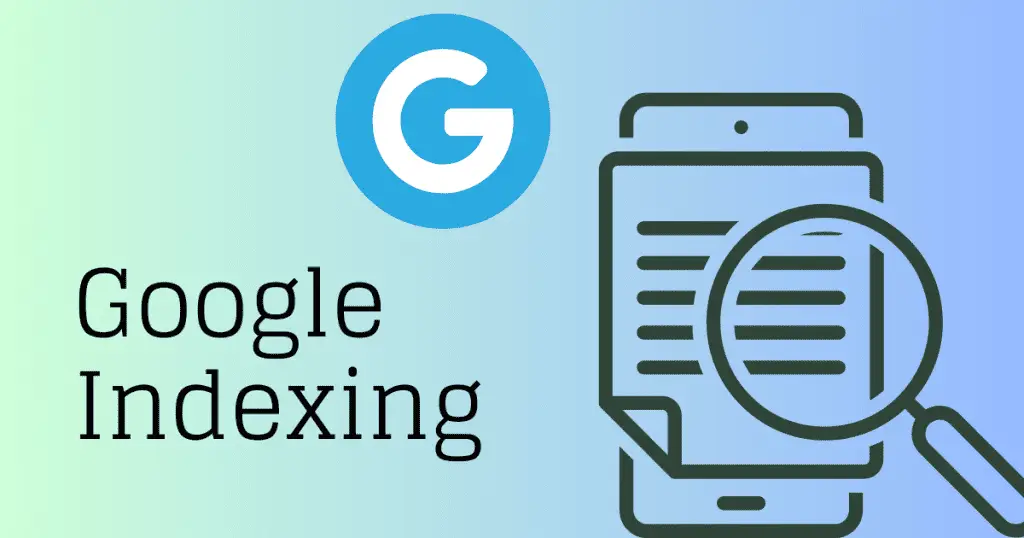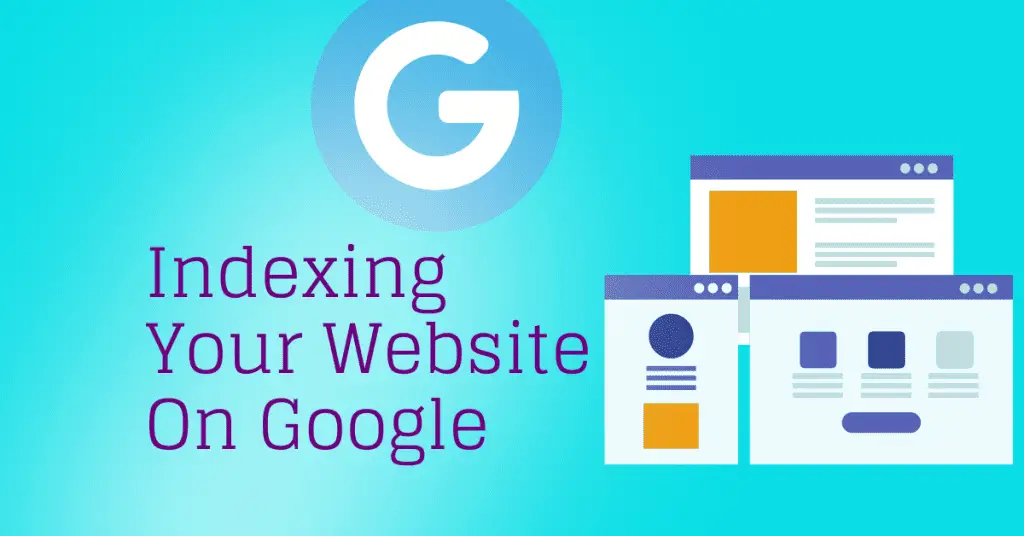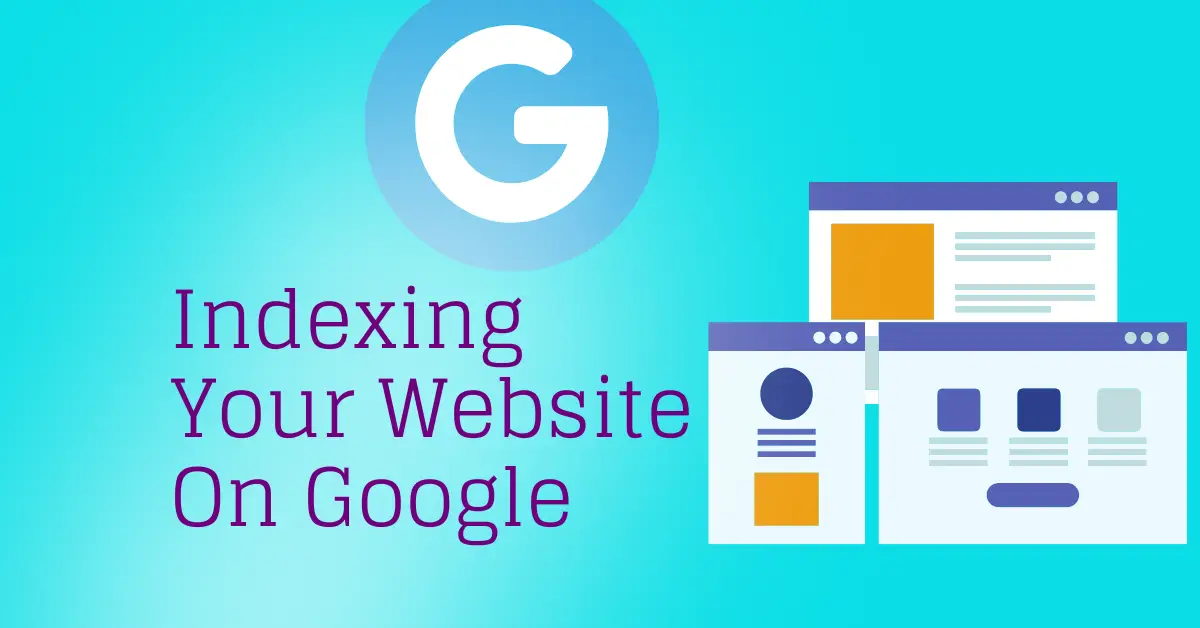Having your website properly indexed on Google is crucial for getting found by potential customers searching online.
If your site isn’t indexed, people won’t be able to discover your content and products. The good news is there are several key things you can do to get your pages indexed by Google.
What is Google Indexing?

Google indexing refers to the process by which web pages are added to Google’s massive search index. This index is essentially a vast database containing hundreds of billions of web pages that Google’s automated web crawlers have discovered and analyzed.
When a page from your website gets indexed by Google, it means that Google’s bots have come across that page while crawling the web and added it to the Google index. This now makes the page eligible to appear as a search result when people enter relevant queries.
Getting your important website pages included in Google’s vast index is crucial because only indexed pages can rank and show up in search. If your pages are not indexed, searchers will not see them in results – even if the content perfectly matches their query. Google can’t return results for site content that its crawlers have never discovered and added to the search index.
Does Google Automatically Index Websites?
Google will eventually discover pages from most public websites, but that doesn’t mean all of your site’s pages will get indexed. There are a few key reasons why Google might not index all of your content:
-Your site structure makes pages difficult for Google to find
-Thin content offers little value to searchers
–Technical issues like crawl errors prevent indexing
You can’t take indexing for granted. To make sure Google can access and index your important pages, it pays to take a proactive approach.
How to Check if Your Pages are Indexed on Google
You can easily check whether specific pages or sections of your website are indexed by Google. Here are a couple quick ways to check:
-Site: search – Do a search for “site:yourdomain.com/page-url” and see if that page shows up in results.
-Google Search Console – Check Google Search Console for index coverage reports and crawl stats.
If pages you want indexed are not showing up, it’s time to take action to get Google to discover and index that content.
10 Ways to Get Your Pages Indexed by Google

The Google Indexing is not in your hands. However, some strategies can be implemented to push Google to index your pages.
Here are 10 effective tips below for getting web pages indexed by Google:
1. Structure your site properly
Ensuring your site architecture facilitates easy crawling for Google is crucial for indexing. If your pages are buried under too many nested subfolders or complex navigation, Googlebot may struggle to discover and access all URLs to add to its index.
Some important site structure considerations include:
- Avoid deep subfolder structures with pages nested under more than 3 subfolder levels. Flatter, broader hierarchies work better.
- Connect logical site sections together using internal links and site-wide navigation. Cross-linking improves crawlability.
- Set up clean, organized permalink structures using keywords in URL slugs. Readable URLs are indexed more easily.
- Ensure internal site search results and filtered views lead to real, crawlable pages for indexing.
- Consolidate versions of pages into canonical versions to avoid duplicate content issues.
- Use the rel=”canonical” tag where needed to point to your preferred URL.
- Check for broken links and redirects frequently as these can block crawling.
- Optimize page loading speeds – slower pages impede the crawl budget.
- Take advantage of XML sitemaps and robots.txt to guide crawl prioritization.
Carefully structuring a website helps Google reach, crawl, and index all important pages effortlessly. Site architects should design seamlessly interconnected site maps that align with the search engine spidering process. When the path to indexing pages is clear and unobstructed, you achieve fuller, faster indexing of all content.
2. Create XML sitemaps
XML sitemaps serve as a roadmap for Google to find and index new pages added to your site. Every time you publish fresh content, an updated sitemap notifies Google about these new URLs.
Sitemaps list all the page URLs you want indexed in an organized, robot-readable XML file that Google can easily crawl. Without sitemaps, Google relies solely on internal links to discover new pages, which means new and orphaned pages would get overlooked.
Crafting detailed XML sitemaps and submitting them to Google Search Console leverages direct messaging to connect updated URLs with Google’s indexing queue. Best practices for maximizing the power of sitemaps include:
- Generate a complete index sitemap of all pages and embed it in your robots.txt file to provide the starting point.
- Create separate sitemaps for different content types like pages, posts, images, videos, etc.
- Update permalink URLs as you publish new blog content and regenerate sitemaps.
- Add new landing pages you create straight into the site architecture.
- Re-submit all sitemaps any time new content goes live.
- Monitor Search Console for crawl stats and equip the Fetch tool to request indexing.
With every site architecture shift and content creation cycle, updated XML sitemaps guarantee Google has awareness of new pages as soon as they go live for prioritized inclusion into its ever-updating search index database.
3. Include targeted keywords in page content
Incorporating relevant keyword phrases naturally into page content is vital for helping Google understand the topics and concepts your page covers. This in turn optimizes the page for indexing for searches on those terms.
When scanning pages, Google looks for indicators of relevance tied to search queries. Pages with content that includes and supports keyword phrases searchers are likely to enter will be deemed highly relevant. Some key guidelines around keywords include:
- Researching target keyword phrases with significant search volume that align with your products or services.
- Incorporating these exact match keywords and semantic variations naturally throughout page copy where relevant and readable.
- Using keywords appropriately in titles, headers, page URLs, meta descriptions, alt text etc.
- Ensuring adequate keyword density without over-optimizing or forcing placement.
- Publishing fresh, original long-form content expanded around chosen keywords.
When Google indexes pages enriched with keywords searchers use, those pages will rank well for matching searches. This lands you more opportunities for visibility and traffic. Optimized keyword placement signals precisely what each page is about and who it should rank for. Targeting specific phrases guides Google in indexing your most relevant pages per topic.
4. Building quality backlinks to new pages
Backlinks from external sites pointing to new pages on your domain are extremely powerful for getting those pages indexed faster by Google.
Google considers backlinks as votes of confidence – implying that pages receiving more links from the wider web must contain useful, important content worth discovering and indexing.
Some best practices for leveraging backlinks include:
- Identify quality websites in your industry and reach out to request backlinks to new content. Look for edu domains in particular.
- Produce truly unique, value-added content worthy of earning feature placements and backlinks from publishers.
- Promote and share new content on social channels using target keywords to generate more pick up.
- Create visual assets like images and embed them on other sites with a link back to source.
- Publish helpful, informative off-site blog content with links back to on-site product pages to index.
- Use Google Search Console to identify new pages with thin or no backlinks and focus on strengthening those with high-value links.
Essentially backlinks act as votes towards page relevance and authority around certain topics. By securing more referral links, Google will assume fresh content offers value to searchers and should be indexed and ranked well. This allows new pages to gain credibility faster for competitive keywords.
5. Produce fresh, unique content regularly
Publishing new, original website content on an ongoing basis provides Google’s crawlers with a constant flow of additional pages to discover and add into its search index.
Unique content also signals to Google that your site offers value, relevancy, and expertise worthy of index prioritization. You can consider some key points on content freshness:
- Set a consistent content production schedule for blogging, new landing pages, videos etc.
- Maintain a content calendar to plan topics that help searchers and attract links.
- Produce in-depth articles, analyses and resources centered around target keywords.
- Refresh outdated materials to realign with current search trends.
- Develop new pages showcasing products, services or features.
- Generate location-specific and seasonal content that stays relevant over time.
- Create link-worthy visual assets like images, quizzes and infographics.
By dedicating resources into an organized regimen of fresh content creation, websites can significantly expand page totals indexed by Google. New pages also breed new keyword opportunities to increase reach.
The focus on value-added, insightful and entertaining content will both capture indexed pages more easily and engage human audiences. Staying on top of publishing original content should anchor any site’s growth and SEO strategy.
6. Make sure your site is crawlable
For Google to properly index all pages on your site, the entire architecture must be easily and fully crawlable. Any roadblocks or restrictions blocking Google’s bots from accessing URLs will hamper indexing potential.
One major impediment, according to Google Search Console data, are crawl errors – when Google attempts to access a page but encounters an issue that prevents indexing.
Here are some common crawl errors:
- 404 Not Found Errors – Occur when pages are deleted or media files are missing.
- 500 or 503 Server Errors – Signal problems rendering pages during the crawling process.
- Blocked By Robots.txt – Happens if your robots.txt file blocks key sections of your site.
- Duplicate Titles and Meta Descriptions – Conveys duplicate or thin page content without unique value.
Fixing crawl errors proactively requires a bit of technical SEO diligence, like:
- Enable automatic URL Canonicalization
- Streamline Site Architecture
- Allow Search Engines Full Access
- Address Broken Links and Site Speed Issues
- Update Robots.txt and sitemaps
Analyzing and addressing crawl errors will allow for fuller, cleaner indexing across your URL structure so no pages with potential relevance are left unseen and unindexed.
7. Implement proper 301 redirects
When you need to change the URL for a page that is already indexed by Google, using proper 301 redirects is vital for transferring link equity and value to the new location so indexing continues seamlessly.
A 301 redirect is an instruction to permanently forward one URL to another URL. Implementing 301s when site migration or reorganization means having to move web pages to new addresses tells Google: “hey this content has permanently moved over here now instead”.
By redirecting the URL properly using server-side 301 redirection, you pass forward the existing link juice, history and weight to the new page seamlessly so Google indexes the new location appropriately. This preserves organic visibility and prevents broken indexing that loses your rankings.
Here are some best 301 redirect tips you could follow for better optimizing:
- Use a 301 over other redirect types like 302s and meta refreshes
- Redirect from old URLs to new URLs one-to-one to transfer equity
- Monitor redirects to ensure proper functionality
- Replace old URLs in site links and sitemaps with new URLs
- Use Search Console to identify redirect chains for optimization
Properly redirecting indexed pages to new locations ensures Google’s index updates accordingly and no indexing or ranking power is diluted when you need to refresh content or URLs.
8. Optimize page speed
Quickly loading pages are indexed by Google more effectively because site speed correlates strongly to overall site quality and crawl efficiency.
Basically, the faster your pages load, the more easily Google can scan and index the content. Slow page speed hinders the crawling process, essentially throttling how much your content gets indexed over time.
Optimizing page speed involves technical enhancements like:
- Compressing images, CSS and JS files
- Implementing browser caching for static assets
- Removing unnecessary redirects
- Transitioning blocking JS code down below content
- Upgrading to faster web hosting infrastructure
- Optimizing server response times
Prioritizing your fastest loading, high-relevance pages helps Google spiders index them quicker for more immediate returns. Treat page speed as a ranking factor.
9. Use Google Search Console
Google Search Console provides invaluable data to view Googlebot crawling and indexing status for better optimizations. Key reports include:
- Index Coverage Report – Displays index percentage for pages Google knows about, pages with issues, and pages submitted. Helps identify unindexed or under-indexed site portions for diagnosis.
- Crawl Stats – Breaks down crawling frequency over time across pages, plus crawling errors. Spot check issues blocking Googlebots.
- Sitemaps Report – Validates indexed and submitted XML sitemaps data. Checks for sitemap errors.
- Links to Your Site Report – Highlights latest links from external sites signaling page value for improved indexing.
Search Console aggregates metrics directly from Google itself on exactly how it accesses your site, where issues arise, what has been indexed, and what links come in to prioritize pages.
Use Search Console to both overview the indexing health of your domain and conduct page-specific troubleshooting so new, quality content gets indexed faster by Google. The tool provides all the insights needed to achieve this.
10. Be patient
Google’s crawlers and algorithms do not index newly published web pages instantly. While some content gets included rapidly, full indexing of all pages, especially an entire new site, inherently takes significant time.
Reasons complete indexing can be delayed include:
- Massive scale of the existing Google index averaging hundreds of billions of pages
- Frequency limits on Googlebot site crawling and page analysis
- Prioritizing established authoritative pages over new unproven pages
- Slow technical migration of index data updates to all Google server data centers
- Assessing freshness and uniqueness of content before confirming index status
- Monitoring new pages for popularity growth signals before escalating index inclusion
Getting indexed by Google takes effort, but it’s worth it. By taking the right approach, you can make sure both existing and new website content shows up in Google search results exactly when people search for related topics. Following this comprehensive SEO indexing guide will help you drive more search visibility and traffic to your site.
Conclusion
Getting your website properly indexed in Google’s search results is foundational to an effective SEO strategy.
By understanding what the Google index is, checking your current index status, and methodically improving indexing where needed, you can dramatically boost site traffic and visibility for your most important pages.
Be proactive about addressing site structure, content quality, technical issues, and employing indexing best practices covered in this guide. With a concerted effort over time, your site will be fully indexed so interested searchers can easily discover your products, services and content. Improved search engine visibility leads directly to more site visitors and increased revenue, so leverage these indexing techniques to grow your business.

